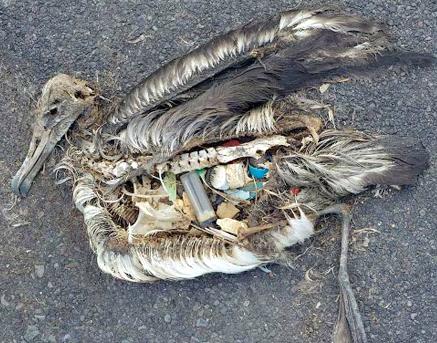Contaminants in Marine Plastic Pollution, the new toxic time- bomb

IPEN Participating Organization National Toxics Network (NTN) has just released a new report, "Contaminants in Marine Plastic Pollution, the new toxic time- bomb."
The United Nations Environment Programme called marine plastics the “new toxic time- bomb.” Marine plastic is not only entangling and drowning wildlife, it is being mistaken for food and ingested along with its toxic contaminants. Marine plastics, and, in particular microplastics, provide a global transport medium for the most toxic chemicals into the marine food chain and ultimately, to humans.
Persistent bioaccumulative toxins (PBTs) contaminate all forms of marine plastics (eg: resin pellets, microbeads, polystyrene and microplastic debris like tiny threads from ropes, nets and synthetic clothing). Because microplastics have larger surface area to volume ratio, they accumulate and concentrate PBTs and metals. Once in marine environments, plastic polymers undergo some weathering and degradation, aiding the adsorption of PBTs from the seawater, where they exist at very low concentrations. The contaminants concentrate in microplastic fragments at several orders of magnitude higher than background levels in seawater.
By ingesting the minute pieces of plastic, marine species consume persistent organic pollutants (POPs), including pesticides such as DDT, PCBs, and lindane, as well as many toxic plastic additives (eg: bisphenol A (BPA), phthalate plasticizers, brominated flame retardants (PBDE) and heavy metal stabilisers). Many of these contaminants are endocrine (hormone) disruptors capable of adverse effects at very low levels. Marine organisms are also exposed to the chemical intermediates from the plastics’ partial degradation like carcinogenic styrene and highly toxic, polycyclic aromatic hydrocarbons (PAHs). Perfluorinated compounds (PFCs) used to make fluoropolymers have also been found in microplastics.
You can download NTN's report on their website here.
